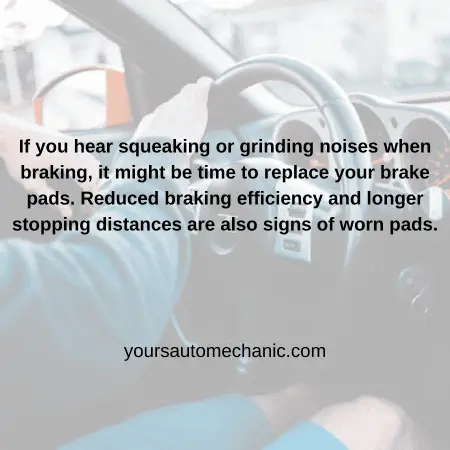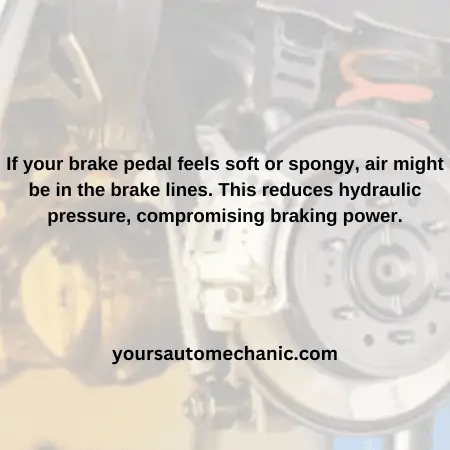Have you ever hit the brakes on your Toyota and felt like your car wasn’t slowing down as it should? That’s a scary feeling, right? Braking power is crucial for your safety and the safety of others on the road. Let’s dive into why your Toyota might be experiencing low braking power and what you can do to fix it.
What is Braking Power?
Braking power refers to the effectiveness of your car’s braking system. It’s the ability of your brakes to slow down or stop your vehicle when you press the brake pedal. A well-functioning brake system ensures you can stop quickly in an emergency and drive safely in various conditions.
What Does Low Braking Power Mean?

Low braking power means that your car’s brakes are not stopping the vehicle as effectively as they should. You might notice that you need to press the brake pedal harder or that it takes longer for your car to come to a complete stop.
Increased Stopping Distance:
When your brakes are working properly, your car should stop within a short distance after you apply the brakes. If the braking power is low, it means you will need more distance to stop the car. This can be dangerous, especially in situations where you need to stop suddenly, such as in heavy traffic or when a pedestrian crosses the road unexpectedly.
Harder Pedal Pressure:
Normally, you shouldn’t have to exert much force on the brake pedal to slow down or stop your car. However, with low braking power, you might find yourself having to press the pedal much harder than usual. This is because the brakes are not responding as they should, requiring you to use more effort to achieve the same effect.
Delayed Response:
Ideally, your car should start slowing down immediately when you press the brake pedal. With low braking power, there can be a noticeable delay between pressing the pedal and the car starting to slow down. This delay can make it harder to judge when to start braking, increasing the risk of accidents.
Spongy Brake Pedal:
Sometimes, low braking power can cause the brake pedal to feel spongy or soft. This means that when you press the pedal, it doesn’t feel firm and responsive. Instead, it might feel like you’re pressing into a sponge, with the pedal sinking lower than usual before the brakes start to engage.
Warning Lights:
Modern cars, including Toyotas, have warning lights on the dashboard that alert you to potential problems. If you see a brake warning light, it could be an indication that your braking power is low and needs to be checked immediately.

Causes of Low Braking Power
Worn Brake Pads: Over time, the brake pads in your car wear down. Thin brake pads can’t create enough friction to stop the car quickly.
Leaking Brake Fluid: Brake fluid helps transfer the force from your foot on the pedal to the brakes. If there’s a leak, there won’t be enough fluid to create the needed pressure.
Air in the Brake Lines: Sometimes, air can get into the brake lines. Air bubbles reduce the efficiency of the braking system, making it feel spongy.
Faulty Brake Booster: The brake booster uses vacuum pressure to help you apply the brakes. If it’s not working correctly, you’ll need to use more force to stop the car.
Damaged Rotors: The brake rotors can become warped or damaged. This reduces the surface area that the brake pads can grip, leading to lower braking power.
How to Fix Low Braking Power in Your Toyota
1. Check and Replace Brake Pads
Brake pads are a crucial part of your car’s braking system. They are the components that press against the brake rotors to create the friction needed to slow down or stop your car. Over time, brake pads wear down due to the friction they endure.
Look at the brake pads through the spaces in your car’s wheel spokes.
If the brake pads appear less than a quarter-inch thick, they need replacement.
Listen for any squealing noise when you apply the brakes, as this sound can indicate worn pads.
2. Inspect for Brake Fluid Leaks
Brake fluid is essential for your braking system. It transmits the force from your foot on the brake pedal to the brakes themselves. Without sufficient brake fluid, your brakes can’t generate the pressure needed to stop the car effectively.
Look under your car for any puddles or drips that might indicate a brake fluid leak.
Check the brake fluid reservoir, usually located near the engine. If the fluid level is low, there might be a leak.
If you find a leak, it’s important to have it repaired by a professional. Leaks can occur in various parts of the braking system, including the brake lines, master cylinder, or calipers, and a mechanic can pinpoint the exact source and fix it.
3. Bleed the Brake Lines
Air in the brake lines can cause a spongy brake pedal and reduce braking power. Bleeding the brake lines removes any air bubbles and restores proper pressure in the braking system.
You will need a brake bleeding kit, which includes a wrench and a container to catch the old brake fluid.
Start by locating the bleeder valve on each brake caliper.
Have a friend press the brake pedal while you open the bleeder valve to let the old fluid and air out.
Close the valve before your friend releases the brake pedal to prevent air from re-entering the system.
Repeat the process until you see clear, air-free brake fluid.
4. Test the Brake Booster
The brake booster uses vacuum pressure to help you apply the brakes more easily. If it’s faulty, you’ll need to use more force to stop the car, which can be dangerous.
With the engine off, press the brake pedal several times to remove any vacuum stored in the booster.
Press the brake pedal down and start the engine. If the pedal moves slightly downwards, the booster is working correctly. If not, it might need to be replaced.
Replacing a brake booster can be complex, so it’s usually best done by a professional mechanic.
5. Examine the Rotors
Brake rotors are the discs that the brake pads clamp down on to stop your car. If they are warped or damaged, they won’t provide a smooth surface for the brake pads, reducing braking efficiency.
Remove the wheel to access the brake rotors.
Look for any signs of warping, grooves, or cracks on the rotor surface.
If the rotors are damaged, they will need to be resurfaced or replaced. Resurfacing can be done if the damage is minimal, but for significant damage, replacing the rotors is the best option.
Must Read
- How Do I Stop My Brakes From Squeaking In Reverse? ( 6 Steps )
- How To Clear Service Suspension System? Explained
- Battery Voltage Drops While Driving – Causes & What To Do
Conclusion
Low braking power in your Toyota can be a serious issue, but understanding the common causes and solutions can help you address it quickly. Regular maintenance and prompt repairs are key to keeping your brakes in top condition. Always prioritize your safety and don’t hesitate to consult a professional when needed.
